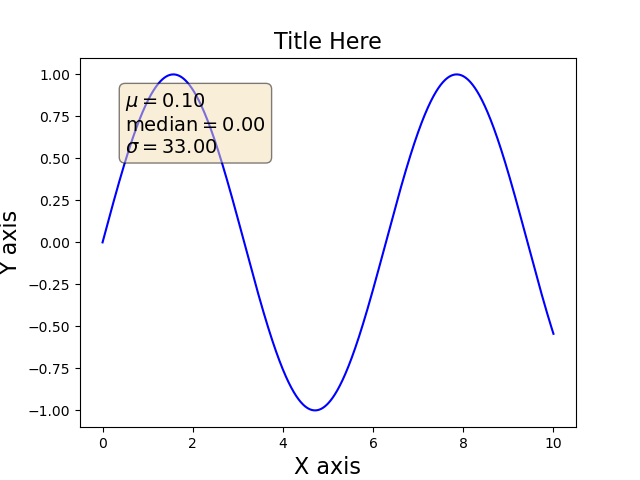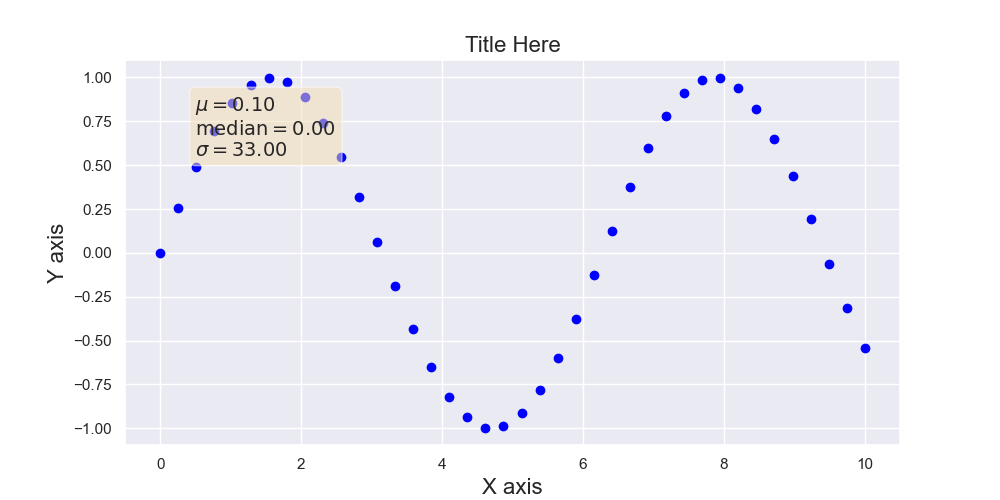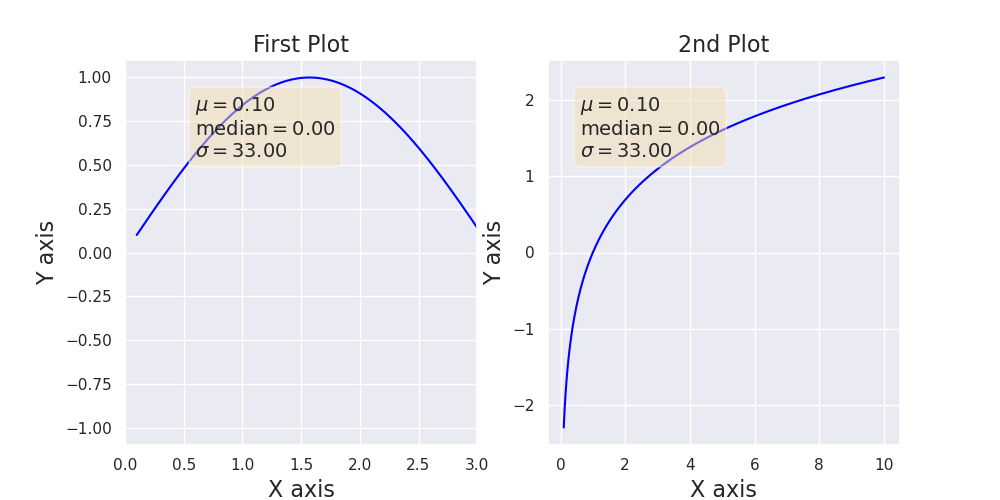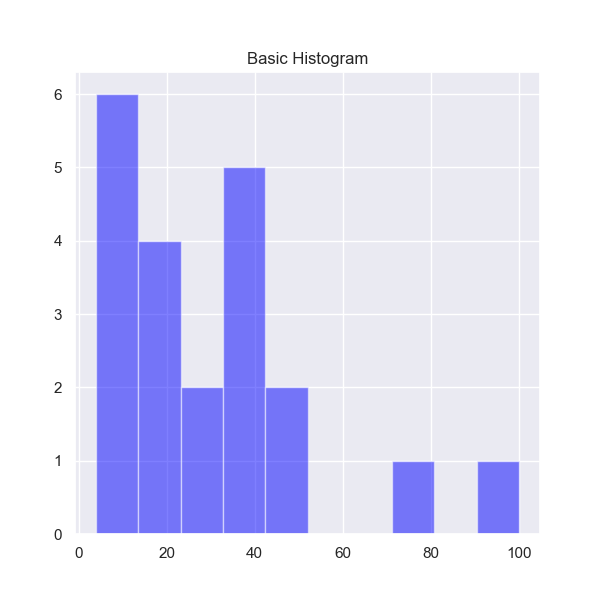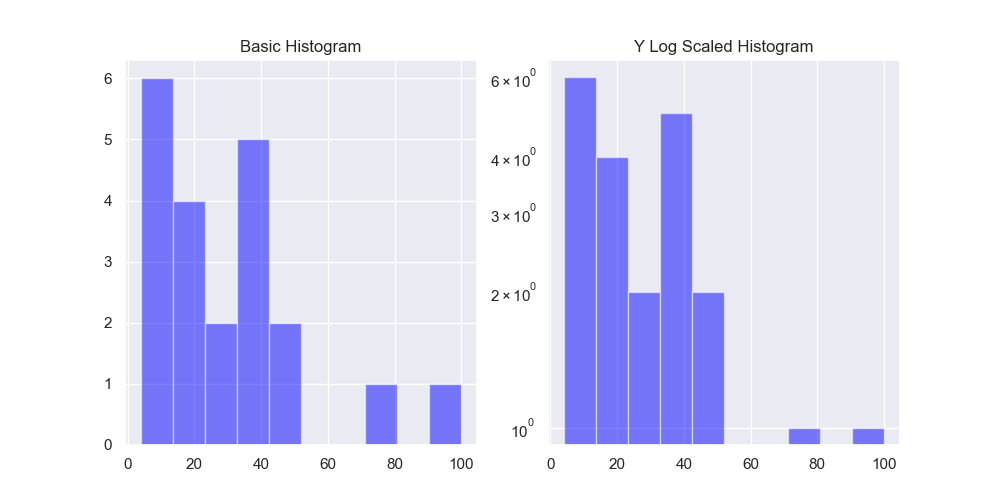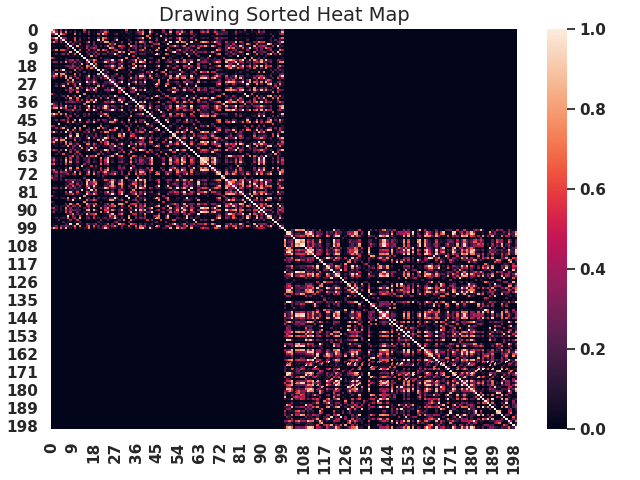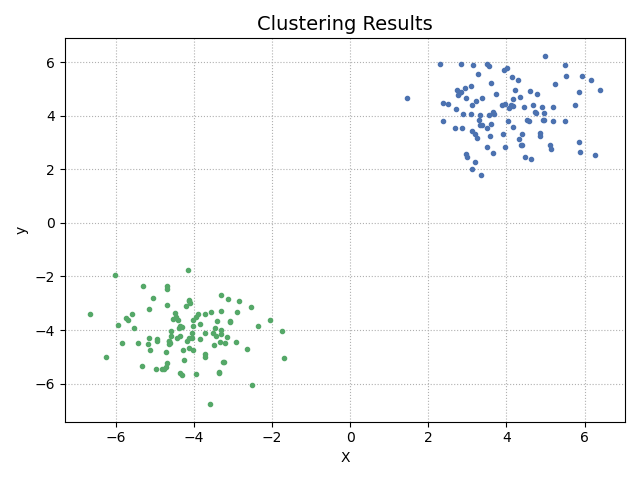A library that simplifies some basic plotting.
Project description
wplotlib
Chieh's quick plot library
Pip Installation
pip install wplotlib
Example Line Plot Usage
from wplotlib import lines
from sklearn.cluster import SpectralClustering
textstr = ''.join(( r'$\mu=%.2f$' % (0.1, ), r'$\mathrm{median}=%.2f$' % (0, ), r'$\sigma=%.2f$' % (33, )))
x = np.linspace(0, 10, 1000)
y = np.sin(x)
lp = lines()
lp.plot_line(x, y, 'Title Here', 'X axis', 'Y axis', imgText=textstr)#, outpath) #x can be set to None
Example Scatter Plot Usage
import wplotlib
textstr = '\n'.join(( r'$\mu=%.2f$' % (0.1, ), r'$\mathrm{median}=%.2f$' % (0, ), r'$\sigma=%.2f$' % (33, )))
x = np.linspace(0, 10, 40)
y = np.sin(x)
lp = wplotlib.scatter(figsize=(10,5)) # (width, height)
lp.plot_scatter(x, y, 'Title Here', 'X axis', 'Y axis', imgText=textstr)#, outpath)
Example Multiple Line subPlot Usage
import numpy as np
from sklearn.cluster import SpectralClustering
from wplotlib import lines
from wplotlib import heatMap
from wplotlib import cluster_plot
textstr = '\n'.join(( r'$\mu=%.2f$' % (0.1, ), r'$\mathrm{median}=%.2f$' % (0, ), r'$\sigma=%.2f$' % (33, )))
x = np.linspace(0, 10, 1000)
y = np.sin(x)
y2 = np.log(x)
lp = lines(figsize=(10,5))
lp.plot_line(x, y, 'First Plot', 'X axis', 'Y axis', imgText=textstr, subplot=121)
lp.plot_line(x, y2, '2nd Plot', 'X axis', 'Y axis', imgText=textstr, subplot=122)
lp.show(save_path='twoSubplots.png')
# when making subplots, you have to call show explicitly after all the plots, if you include path, then it will save instead of show
Example Single Histogram
from wplotlib import histograms
x = [21,22,23,4,5,6,77,8,9,10,31,32,33,34,35,36,37,18,49,50,100]
H = histograms()
H.histogram(x, num_bins=10, title='Basic Histogram', xlabel='value', ylabel='count',
facecolor='blue', α=0.5, path=None, normalize=True)
Example of Two Histograms one is log scaled
from wplotlib import histograms
x = [21,22,23,4,5,6,77,8,9,10,31,32,33,34,35,36,37,18,49,50,100]
H = histograms(figsize=(10,5))
H.histogram(x, num_bins=10, title='Basic Histogram', facecolor='blue', α=0.5, path=None, subplot=121)
H.histogram(x, num_bins=10, title='Y Log Scaled Histogram', facecolor='blue', α=0.5, path=None, subplot=122, ylogScale=True)
H.show()
Example Heat Map Usage
from wplotlib import heatMap
X1 = np.random.randn(100,2)
X2 = np.random.randn(100,2) + 5
X = np.vstack((X1,X2))
Y1 = np.ones(100)
Y2 = np.zeros(100)
Y = np.hstack((Y1,Y2))
clf = SpectralClustering(n_clusters=2)
allocation = clf.fit_predict(X)
kernel = clf.affinity_matrix_
axis_label = range(kernel.shape[0])
hMap = heatMap()
sorted_kernel = hMap.sort_kernel(kernel, allocation)
hMap.draw_HeatMap(kernel, title='Drawing Unsorted Heat Map', fsize=14)
hMap.draw_HeatMap(sorted_kernel, title='Drawing Sorted Heat Map', fsize=14)
hMap.draw_HeatMap(sorted_kernel, title='Drawing Sorted Heat Map', use_seaborn=True, vmin=0, vmax=1, center=None, linewidths=0, cmap=None, fsize=14)
#cmap types: "Blues", "YlGnBu", "BuPu", "Greens", None
This code results in
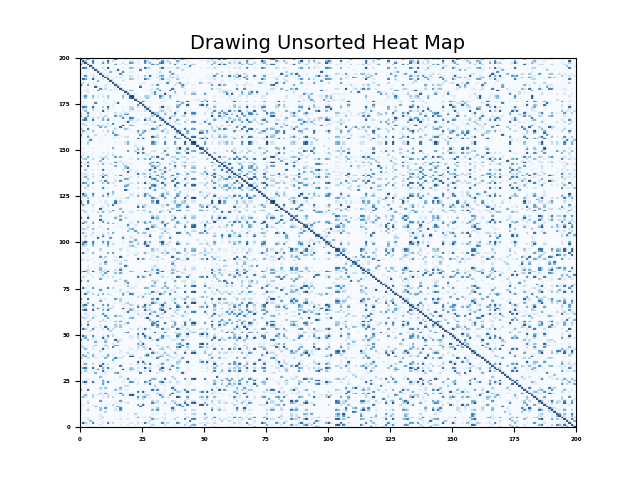
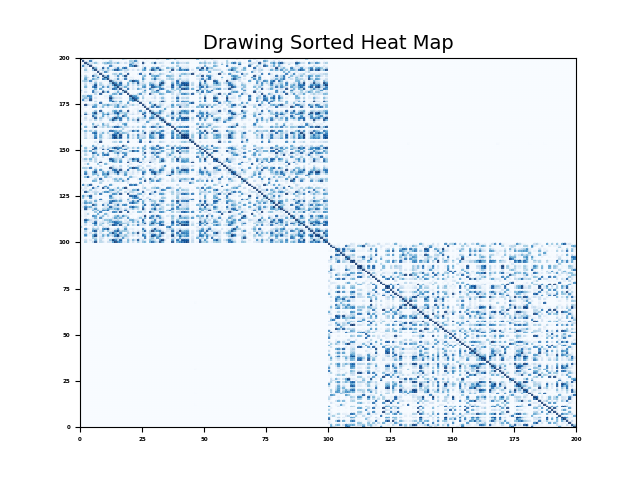
Example Clustering Plots
from wplotlib import cluster_plot
import numpy as np
n = 100
x1 = np.random.randn(n,2) + np.array([4,4])
x2 = np.random.randn(n,2) + np.array([-4,-4])
X = np.vstack((x1,x2))
Y = np.concatenate([np.zeros(n), np.ones(n)])
cluster_plot(X, Y, title='Clustering Results')
This code results in
Project details
Release history Release notifications | RSS feed
Download files
Download the file for your platform. If you're not sure which to choose, learn more about installing packages.
Source Distribution
wplotlib-0.27.tar.gz
(8.1 kB
view hashes)


